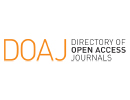Traditions in conflict: the Peruvian Parliament and the construction of the University Law of 1983
Abstract
Under what premises and which actors built 1983’s University Law No. 23373, that remained in force for more than thirty years in Peru? This article answers these questions and shows, among other things, the disputes that arose over the role of the State in the field of university education. The construction of this law represented an important milestone in the process of transformations that began between 1950 and 1960, which produced the decline of public universities and the favorable positioning of private universities, a trend that was consolidated in the following decades. These disputes particularly involved senators and deputies, in a context marked by the strength of political parties in terms of representation; but the article also includes the role played by student organizations and teacher unions, with the intention of showing the links between Parliament and society. These actors discussed autonomy, gratuitousness, and student participation in university government, under the perspectives of two competing traditions on state interference in these matters.
References
Abrams, P. (2015) «Notas sobre la dificultad de estudiar el Estado». En: Abrams, P, Gupta, A, y Mitchell, T., Antropología del Estado, México D. F., Fondo de Cultura Económica.
Ballón, E. (1986), Movimientos sociales y democracia: la fundación de un nuevo orden, Lima, DESCO.
Bernales, E. (1981) Parlamento, Estado y Sociedad, Lima, DESCO.
Bernales, E. (1990) Parlamento y democracia, Constitución y Sociedad, Lima.
Degregori, C (1990) El surgimiento de Sendero Luminoso. Ayacucho 1969 – 1979, del movimiento por la gratuidad de la enseñanza al inicio de la lucha armada, Instituto de Estudios Peruanos, Lima.
López, S (1997) Ciudadanos reales e imaginarios. Concepciones, desarrollo y mapas de la ciudadanía en el Perú, Lima, Instituto de Diálogo y Propuesta.
Lynch, N. (1999) Una tragedia sin héroes. La derrota de los partidos y el origen de los independientes. Perú 1980 – 1992, Lima, Universidad Nacional Mayor de San Marcos.
Migdal, J. (2011) Estados débiles, Estados fuertes, México, Fondo de Cultura Económica
Oszlak, O. (1978) «Formación histórica del Estado en América Latina: elementos teórico metodológicos para su estudio», Estudios CEDES, volumen I, 3.
Tanaka, M. (1998) Los espejismos de la democracia: el colapso del sistema de partidos en el Perú, 1980 – 1995, en perspectiva comparada, Lima, Instituto de Estudios Peruanos.
Tuesta, F. (2001) Perú Político en cifras, Lima, Friedrich Ebert Stiftung.
Copyright (c) 2020 Marcos Garfias

This work is licensed under a Creative Commons Attribution 4.0 International License.








